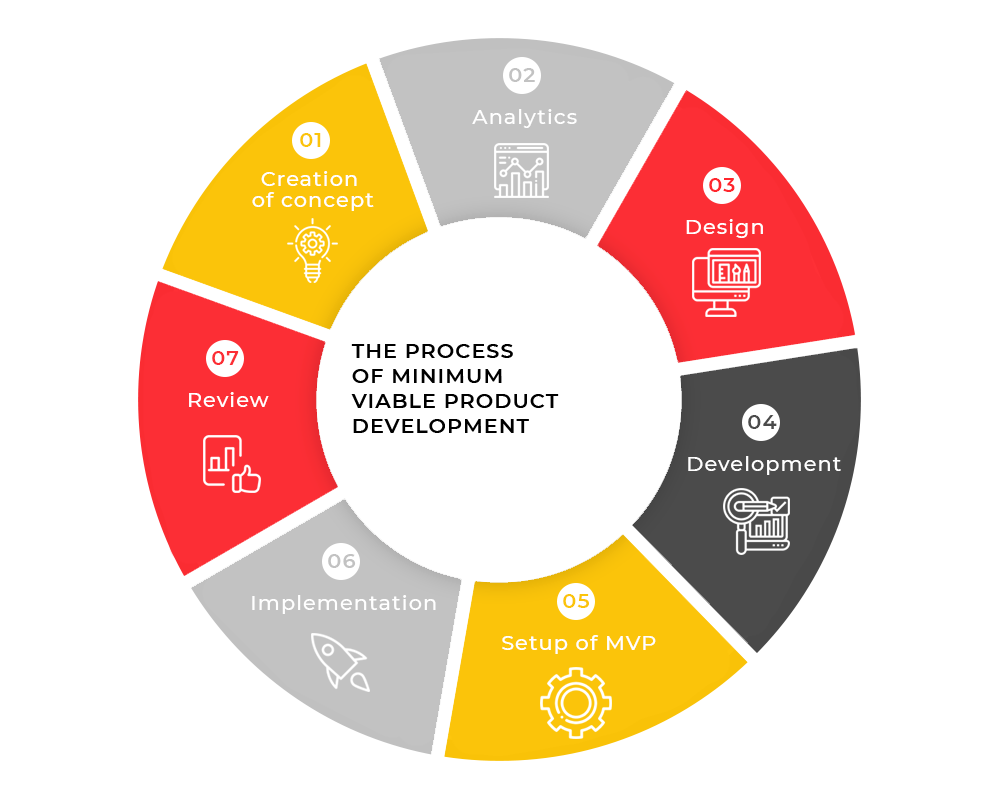Stages for Implementing an MVP
 cypher shield
cypher shield
1. Risk Reduction
Developing a complete mobile app can take months or even years, and cost a considerable amount of money. Unfortunately, there is no guarantee that users will adopt it or that it will be a commercial success. In this scenario, the MVP serves as a low-risk experiment that allows companies to test their idea in the real market before making a larger investment. If the app is not successful, the financial loss is minimal. If successful, you can use the revenue and feedback to fund and guide further development. Collaborating with a reputable mobile app development company in USA can further mitigate risks associated with MVP development, ensuring that the initial investment yields valuable insights and lays a solid foundation for future growth.
First, it is crucial to follow a solid and well-defined development methodology to reduce the risks associated with developing an application. The use of agile methodologies, such as Scrum or Kanban, can be especially useful. These methodologies enable incremental delivery of features, which in turn enables frequent testing and adjustment to minimize the risk of large-scale errors. Additionally, agile methodologies encourage continuous communication and feedback between the development team and stakeholders, which can help identify and resolve potential issues in a timely manner.
Secondly, testing is essential to reduce risks in developing an application. This includes a variety of test types, from unit tests that verify the functionality of individual components, to integration tests that verify that components work well together, and system tests that evaluate the performance of the application as a whole. Automated testing can be especially useful for quickly identifying issues and errors, and can be performed regularly during the development process.
Finally, proper data management and the implementation of strong security measures are essential to reduce risk in the development of an application. This includes encrypting sensitive data, implementing appropriate access controls, and adhering to relevant data privacy regulations. Additionally, it is important to have backup and disaster recovery plans to protect data in the event of system failures. Ensuring these elements are considered from the start of the project can help minimize risks and ensure the success of the application.
2. Early Validation
An MVP allows you to validate your business idea before investing too much time and resources. It allows you to get feedback from real users, which helps you understand if your app solves a real problem and if users are willing to pay for it. With this information, you can make adjustments and improvements based on data and not assumptions.
Early validation in the development of an application is an essential phase that seeks to ensure that the final product is in line with the expectations and needs of the end user. This stage consists of subjecting the first versions of the application to a series of tests and analyzes to evaluate its functionality, usability, and response to unforeseen situations. It also provides the opportunity to make design adjustments and corrections before the development process is very advanced, saving time and resources.
Early validation techniques can vary by project, but often involve prototyping, proof of concept, and feedback sessions with users. Prototypes allow developers to see how the application will be used in a real-world environment, providing valuable insight into its design and operation. Concept tests, on the other hand, can help validate the viability of certain features or functionalities. Feedback sessions with users are equally crucial, as they provide direct insight into how end users will interact with the application, and what improvements may be necessary.
However, despite the obvious benefits of early validation, it is essential to remember that it should not replace more extensive testing and validation performed in later stages of development. Although it can provide valuable initial feedback, early versions of an app are far from the final product. Therefore, testing and validation must continue throughout the entire application development lifecycle, to ensure that all features and functionality work as expected under a wide variety of conditions and scenarios.
3. Speed in Market Launch
The simplified nature of an MVP means that it can be developed and brought to market more quickly than a full app. This allows you to reach users and start generating income much sooner. Additionally, entering the market early also means that you have the opportunity to establish your brand and gain market share before competitors.
Quickly launching an application can have multiple advantages. First, accelerating development time allows companies to bring their products to market faster than the competition. Speed in this context not only refers to the development process itself, but also the ability to make rapid and significant changes in response to user feedback and needs. In today's digital economy, the first company to launch an effective solution can have a significant advantage in terms of adoption and brand recognition.
Finally, an accelerated development speed can facilitate better management of company resources. With shorter development cycles, time and staff can be freed up to work on other parts of the project, such as marketing and customer service, sooner. Additionally, when projects are completed more quickly, there is the opportunity to start new projects sooner, which can lead to a competitive advantage in terms of innovation and diversity of product offerings.
4. Continuous Learning
The development of an MVP does not stop once the product is on the market. Instead, it is based on a constant feedback loop in which user opinions are collected, learned from them, and continuous improvements are made to the app. This iterative process allows your app to evolve with the needs of your users and adapt to changes in the market.
5. Efficiency in the Use of Resources
By focusing on the essential features of your app, you can use your resources more efficiently. This not only applies to the monetary investment but also to the time and effort of your development team. Instead of spending resources on features that users might not need or want, you can focus on what really matters. Leveraging specialized mobile app development services can further optimize this process, ensuring that your resources are allocated effectively to maximize the impact of your app within your target market.
Subscribe to my newsletter
Read articles from cypher shield directly inside your inbox. Subscribe to the newsletter, and don't miss out.
Written by
